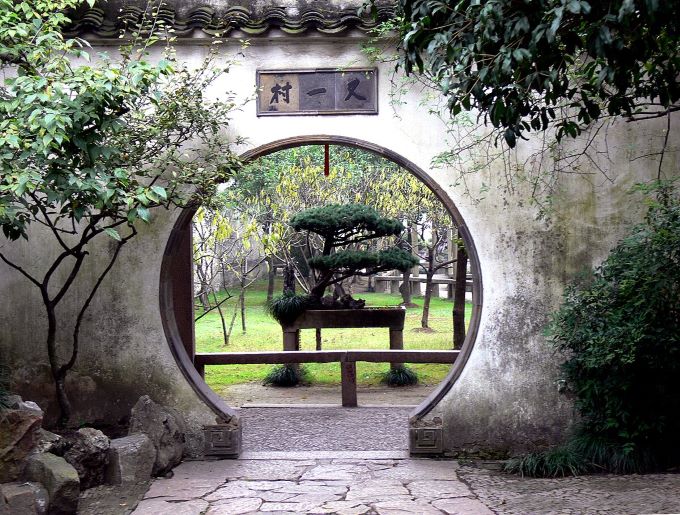Bulletins Friendship and cooperration

China proudly boasts 59 impressive UNESCO World Heritage Sites, ranking second only to Italy. Among these sites, some hold world records as the tallest, longest, or oldest, while others are considered relatively unique. Let's explore the amazing natural wonders of this country, along with the rich historical and cultural heritage recognized by UNESCO over the past decade.
The Great Wall of China - Beijing:
Recognized as a UNESCO World Cultural Heritage Site in 1987, the Great Wall stretches 20,000 kilometers, starting from Shanhaiguan in Hebei Province in the east and ending at Jiayuguan in Gansu Province in the west. Built from the 3rd century BC to the 17th century AD, the Great Wall is a powerful testament to the strategic political thinking, military force, and formidable defense of centralized feudal states, as well as a remarkable example of ancient China’s architecture, technology, and military art.
Mogao Caves - Dunhuang:
The Mogao Caves, located 25 kilometers southeast of downtown Dunhuang, are acclaimed as the world’s greatest discovery of ancient Eastern culture, housing the largest, richest, and longest-used treasure trove of Buddhist art globally. First established in 366 AD and developed over a span of 1,000 years, the Mogao Caves represent an outstanding accomplishment in Buddhist art of over 11 centuries. Recognized as a UNESCO World Cultural Heritage Site in 1987, there are currently 492 preserved caves, holding approximately 45,000 square meters of murals and over 2,000 polychrome sculptures.
Lijiang Ancient Town:
As the most emblematic ancient town built in the late Southern Song dynasty at an altitude of 2,400 meters, Lijiang was recognized as a UNESCO World Cultural Heritage Site in 1997. Dubbed the “Venice of the East,” Lijiang is adorned with centuries-old, red-tile-roofed Naxi houses, nearly 350 elegantly patterned stone bridges spanning the clear canals of the Black Dragon Pool, and rows of souvenir shops adorned with vibrant red lanterns at night.
Classic Gardens of Suzhou:
Designated as a UNESCO World Cultural Heritage Site in 1997, Suzhou, the “City of Gardens,” is renowned for its nine gardens exemplifying classical Chinese garden architecture. Dating from the 11th to the 19th centuries, these gardens are considered masterpieces of the art of gardening, deeply reflecting the significance of natural beauty in Chinese culture. Originating in the 6th century BC when Suzhou was established as the capital of the Wu Kingdom during the Three Kingdoms period, the royal hunting grounds led to the creation of private gardens over four centuries, reaching their zenith in the 18th century. Today, Suzhou retains over 50 gardens, with nine gardens including the Humble Administrator’s Garden, Lingering Garden, Master of the Nets Garden, Canglang Pavilion, Lion Grove Garden, Yi Yuan, Couple’s Retreat Garden, Huanxiu Mountain Villa, and Retreat & Reflection Garden, which are considered quintessential examples of Chinese mountain-and-water gardening.
Potala Palace - Tibet:
Situated on the Red Mountain at an altitude of 3,700 meters in the heart of the Lhasa Valley, the Potala Palace complex, recognized as a UNESCO World Cultural Heritage Site in 1994, also holds the Guinness World Record as the highest palace in the world. It served as the winter palace for the Dalai Lama from the 7th century and played a central role in traditional Tibetan government. The scale of the palace, akin to a “Forbidden City” of Tibet, required 7,000 craftsmen and 66.154 kilograms of gold to complete.
Friendship and Cooperation Bulletin presents to readers some of the world cultural heritages in China, offering insights into history, geography, and culture in commemoration of the 75th anniversary of the founding of the People’s Republic of China (October 1, 1949 - October 1, 2024). Through cultural exchanges, citizens of the two countries have the opportunity to gain a deeper understanding of each other’s land, culture, and customs, fostering solidarity and friendship between the two peoples. Particularly through cultural exchanges, the two countries can unveil cooperation opportunities in various fields, especially in socio-economic areas in localities, undertaking experience exchanges on developing the cultural industry to work out solutions and mechanisms to exploit tourism potential.
The Party, State, and people of Vietnam consistently identify enhancing and developing stable, healthy, friendly cooperative relations with China as a strategic choice, a top priority in Vietnam’s foreign policy of independence, self-reliance, multilateralization, and diversification of foreign relations. Our Party and State leaders affirm their readiness to maintain regular exchanges with China’s senior leaders. This commitment aims to strengthen the strategic orientation for bilateral relations based on high-level shared perception. They are dedicated to continuously nurturing and consolidating the traditional friendship between the two Parties and countries with a priority given to enhancing mutual understanding between the peoples of both nations. Additionally, they focus on promoting the comprehensive strategic cooperative partnership and building a Vietnam-China Community that shares the future developed deeply, substantially, and effectively for the practical benefit of the two peoples, and for peace, stability, cooperation, and development of the region and the world.
Nguyễn Hiền